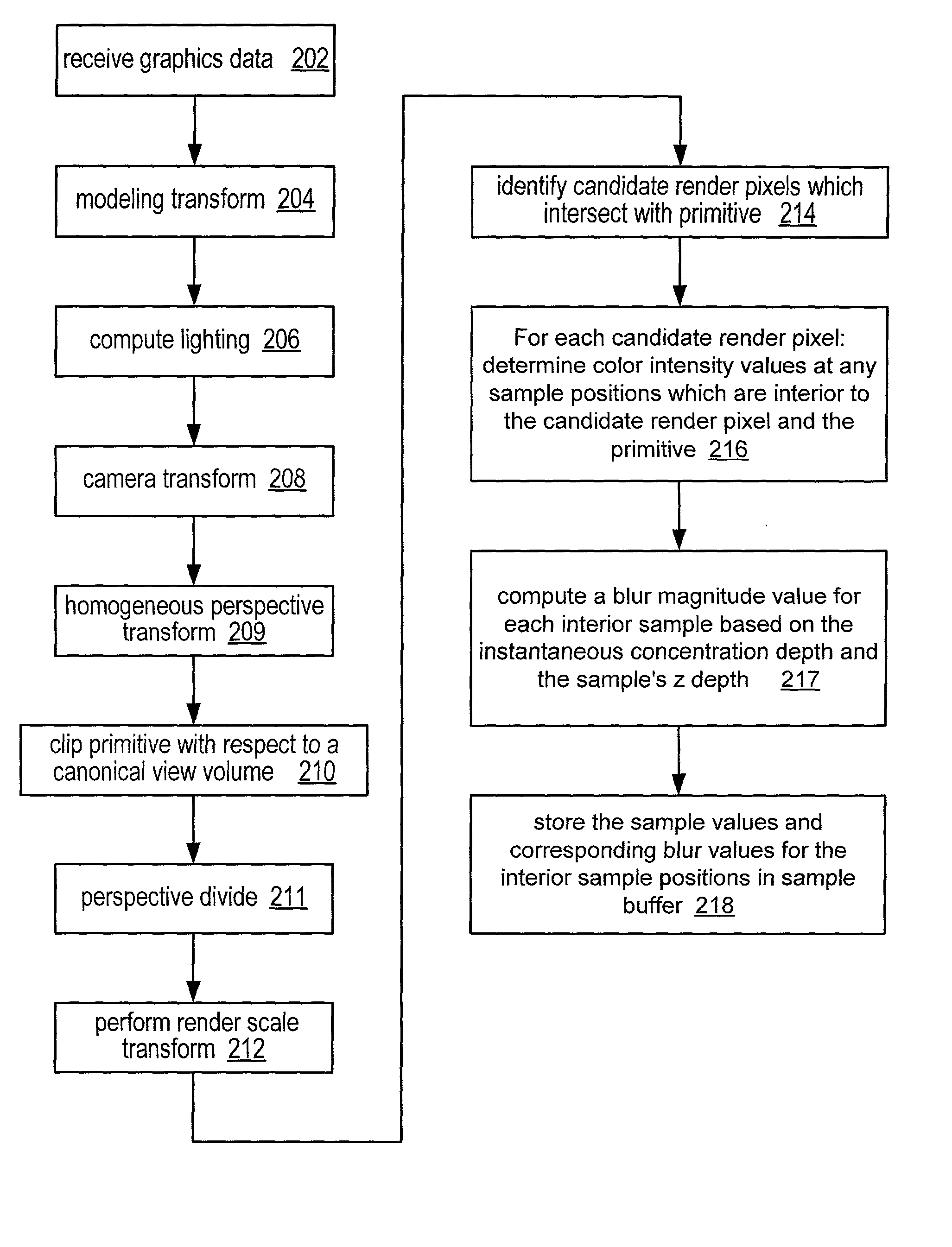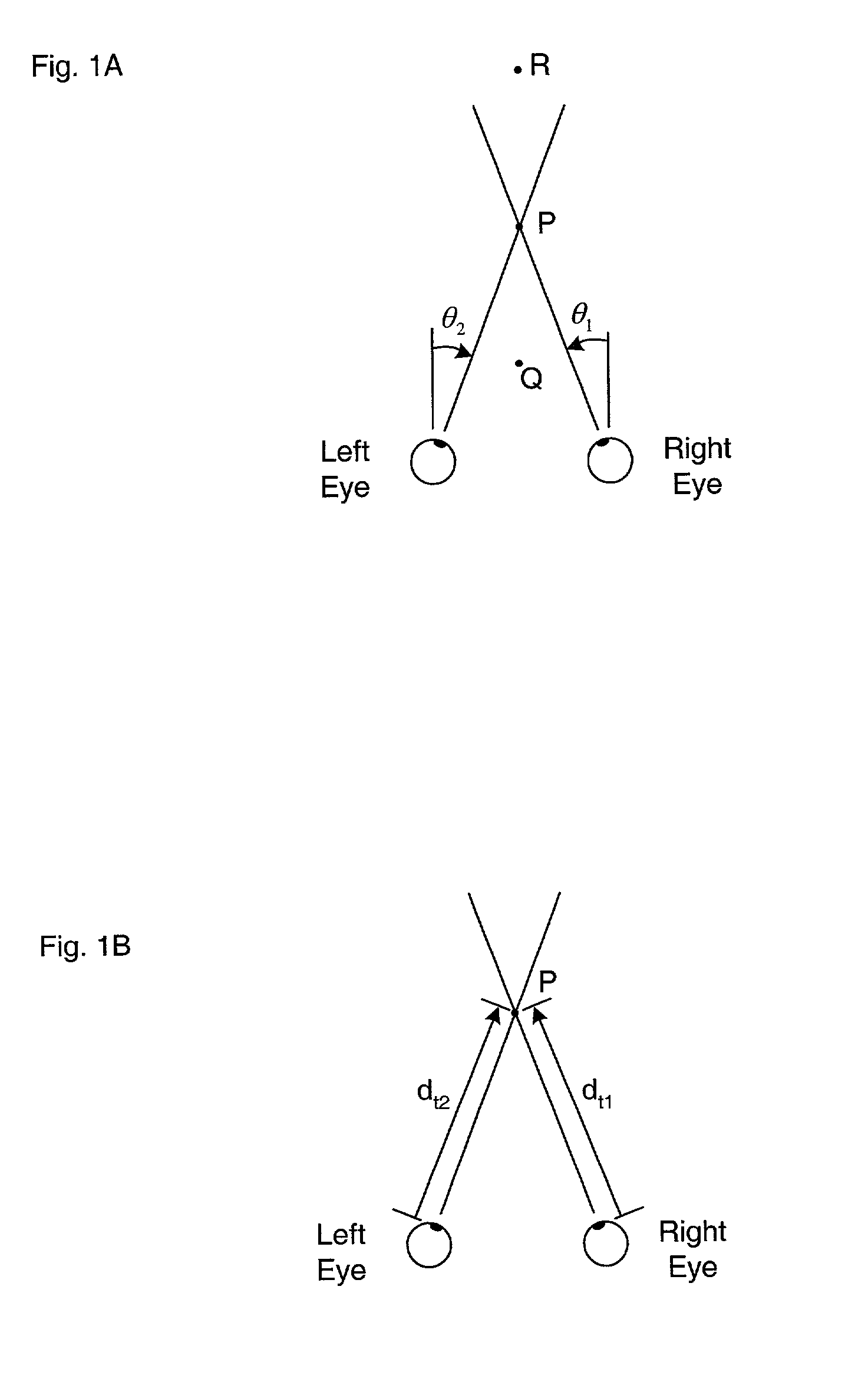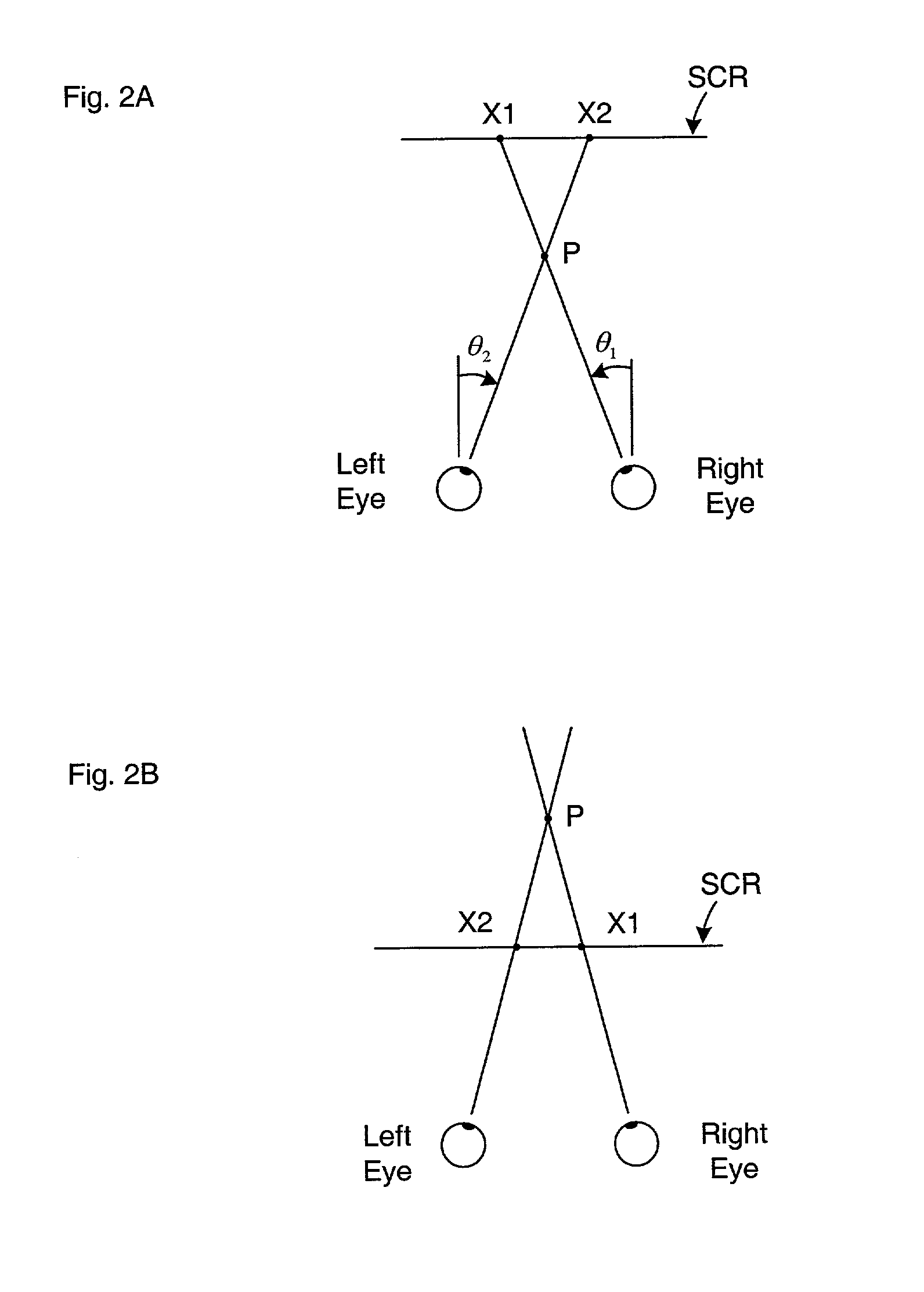Dynamic depth-of- field emulation based on eye-tracking
a depth-of-field emulation and dynamic technology, applied in the field of 3d graphics, can solve the problems of viewers' disadvantages, viewers' difficulty even intentionally achieving focus, and viewers' difficulty (or impossible) to override the brain's tendency to focus at the intersection poin
- Summary
- Abstract
- Description
- Claims
- Application Information
AI Technical Summary
Problems solved by technology
Method used
Image
Examples
Embodiment Construction
FIG. 3
Graphics System 100
[0050] FIG. 3 illustrates one embodiment of a graphics system 100 configured to generate video signals in response to an input stream of 3D graphics data. Graphics system 100 may receive the 3D graphics data from a graphics API (i.e. an application programmer's interface such as OpenGL.RTM., Java 3D.TM., PHIGS or Renderman.RTM. running on a host computer system. For example, the graphics API may store the 3D graphics data in a system memory, and graphics system 100 may read the graphics data from the system memory. The graphics API may be controlled by a graphics application (e.g. a video game, flight simulator, a CAD application or a virtual reality application) also running on the host computer system.
[0051] The 3D graphics data may comprise a stream of graphics primitives. Examples of graphics primitives include polygons, parametric surfaces, splines, non-uniform rational B-splines (NURBS), sub-division surfaces, fractals, volume primitives, and particle ...
PUM
 Login to View More
Login to View More Abstract
Description
Claims
Application Information
 Login to View More
Login to View More - R&D
- Intellectual Property
- Life Sciences
- Materials
- Tech Scout
- Unparalleled Data Quality
- Higher Quality Content
- 60% Fewer Hallucinations
Browse by: Latest US Patents, China's latest patents, Technical Efficacy Thesaurus, Application Domain, Technology Topic, Popular Technical Reports.
© 2025 PatSnap. All rights reserved.Legal|Privacy policy|Modern Slavery Act Transparency Statement|Sitemap|About US| Contact US: help@patsnap.com



